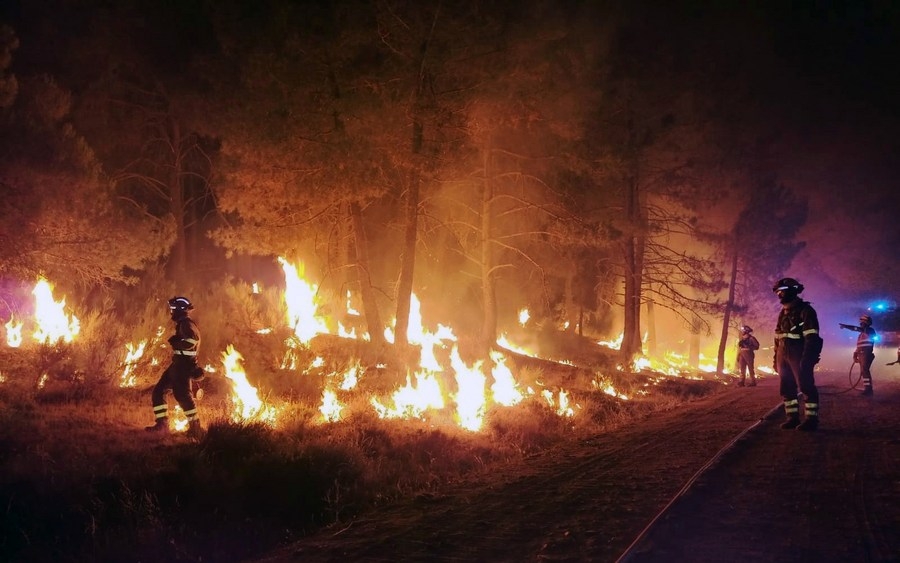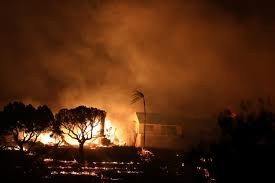The blaze broke out on Wednesday in a mountainous national park around the Mount Teide volcano – Spain’s highest peak – amid hot and dry weather…reports Asian Lite News
Thousands of Tenerife residents have been evacuated as a wildfire deemed “out of control” by officials rages on for the fourth day, Al Jazeera reported.
According to preliminary estimates, more than 26,000 people had been evacuated by Saturday afternoon in the Canary Islands, up from 4,500 on Friday. Eleven towns are presently affected.
The Atlantic island has a population of approximately one million people and is a popular tourist destination.
The archipelago of seven islands is located off the northwest coast of Africa and southwest of mainland Spain. The islands are 100 kilometers (60 miles) from Morocco at their closest point.
As per the Al Jazeera, the fire flames lit up the night sky overnight and helicopters were seen dropping water on areas close to home where smoke billowed into the air.
The report revealed that some 5,000 hectares (12,000 acres) have been burned so far with a perimeter of 50km (30 miles).
The fire was at a scale never been seen before in the Canary Islands, Tenerife Council President Rosa Davila told reporters. She said the priority was to “protect people’s lives”.
The blaze has not destroyed any homes so far, she added, citing the fire brigade.
While the two popular tourist areas of the island have so far been unaffected and its two airports have been operating normally.
The fire is blazing in the steep mountain area with pine trees making it harder for the firefighters to access the location.
The blaze broke out on Wednesday in a mountainous national park around the Mount Teide volcano – Spain’s highest peak – amid hot and dry weather.
The Canary Islands have been in drought for most of the past few years, just like most of mainland Spain. The islands have recorded below-average rainfall in recent years because of changing weather patterns impacted by climate change, reported Al Jazeera.
Scorching heat and dry weather this year have contributed to unusually severe wildfires in Europe, including in Spain’s La Palma Island in July, and Canada. Blazes on Hawaii’s Maui Island earlier this month killed more than 110 people and wrecked the historic resort city of Lahaina.
Scientists have said climate change has led to more frequent and more powerful extreme weather events.
European Union officials also blamed global warming for the increasing frequency and intensity of wildfires in Europe, noting 2022 was the second-worst year for wildfire damage on record after 2017. (ANI)














